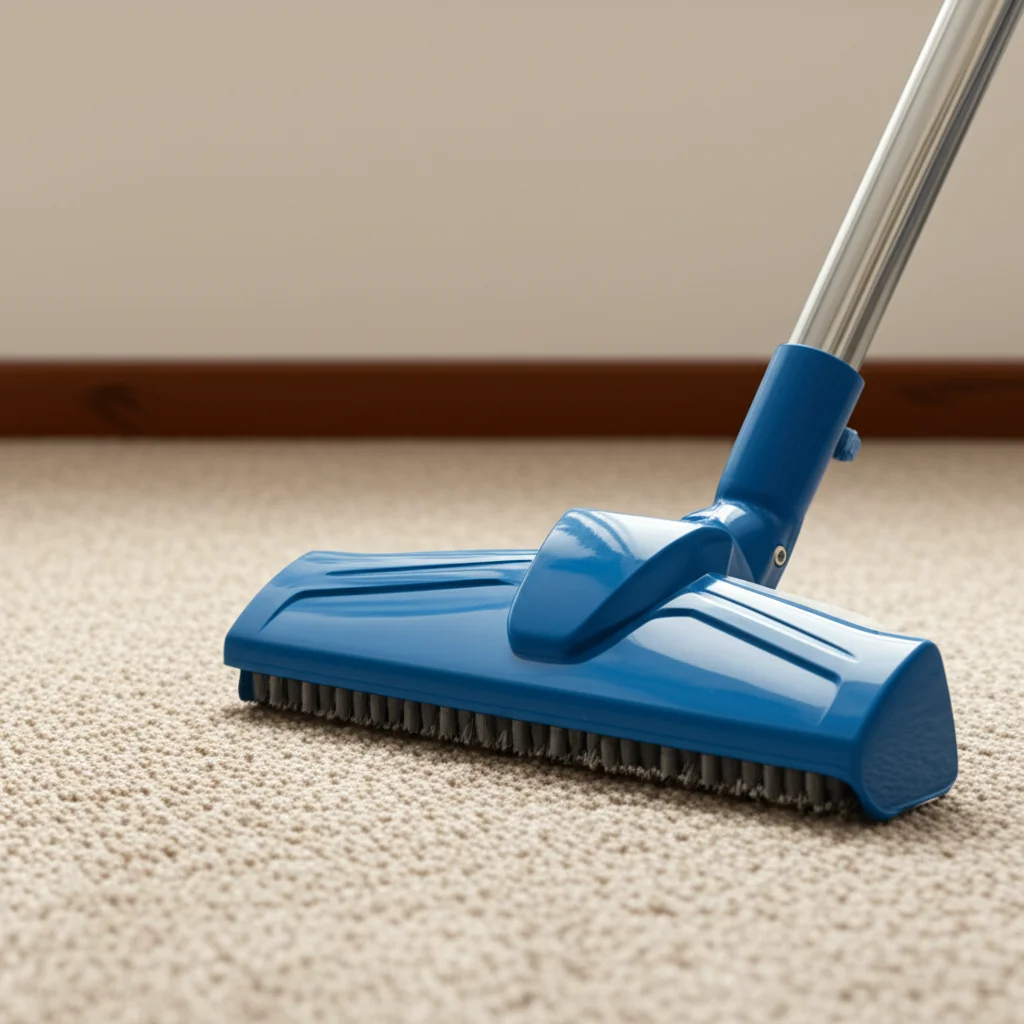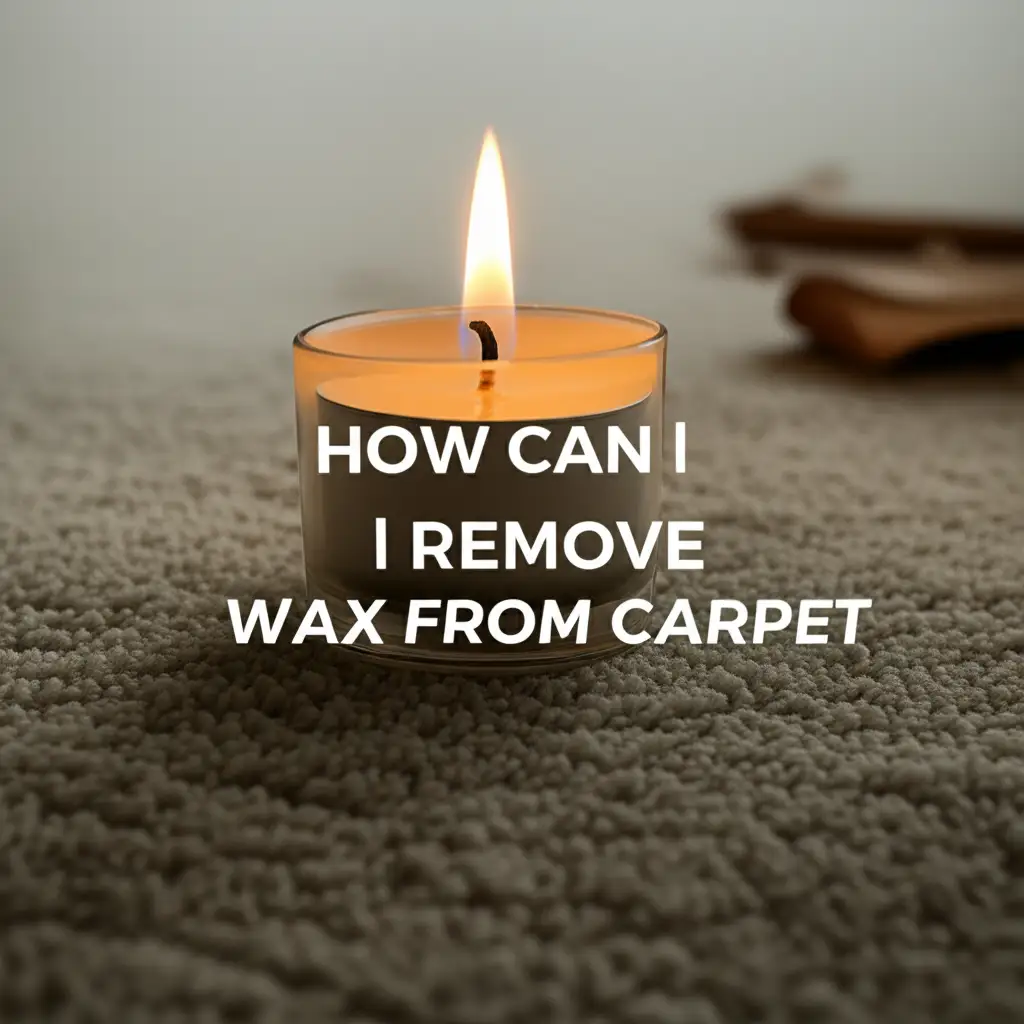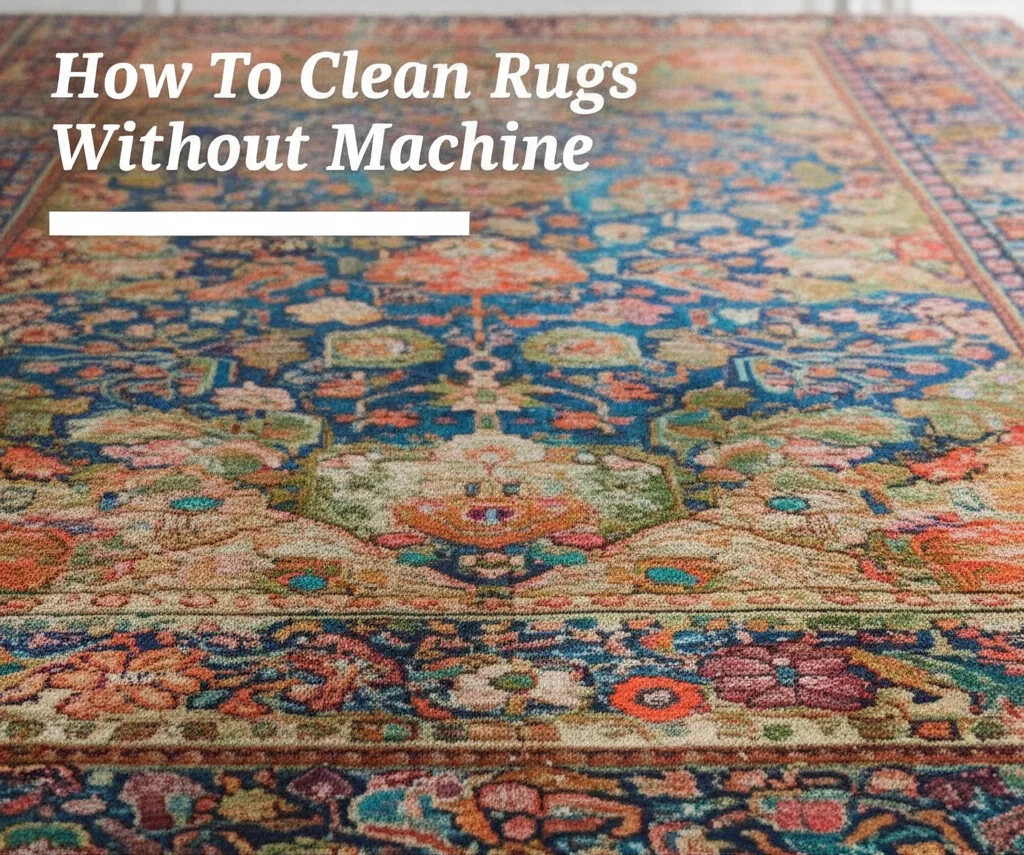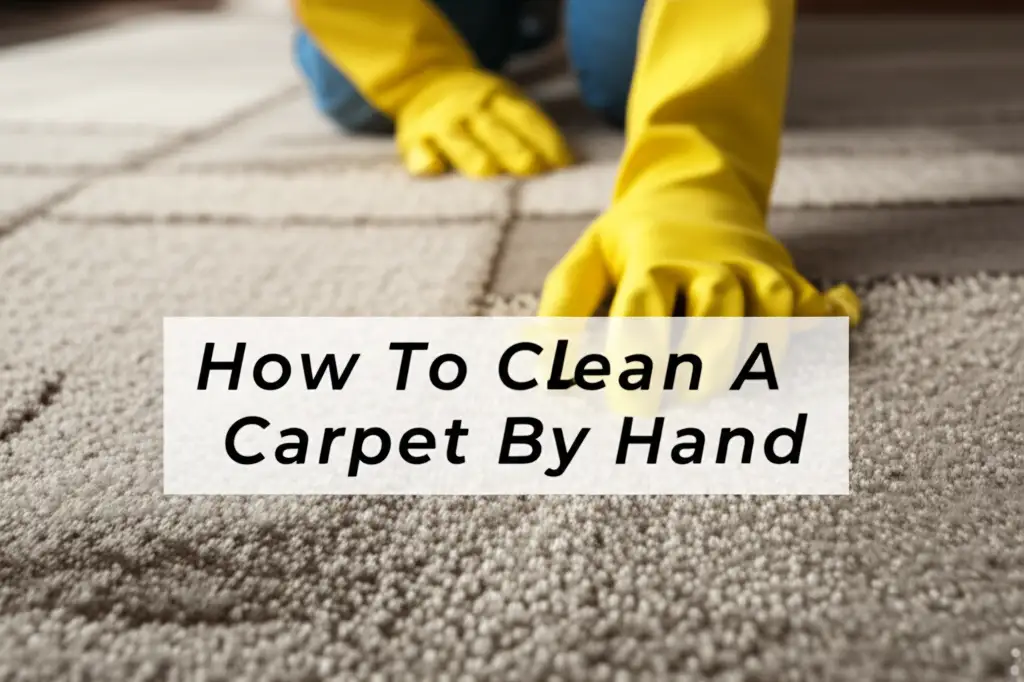· Todd Martin · Home Cleaning · 15 min read
How To Clean A Carpet With Home Goods

How to Clean a Carpet with Home Goods: Simple Solutions for a Fresh Home
My home feels so much better when the carpets are clean. Carpets are central to our living spaces, but they collect a lot of dirt, dust, and spills over time. Knowing how to clean a carpet with home goods can save you money and keep your home feeling fresh. You do not need expensive machines or harsh chemicals for effective carpet care. Many common household items offer powerful cleaning solutions. This guide will show you simple, natural methods to tackle everyday carpet cleaning challenges. We will cover spot treatments, deep cleaning techniques, and odor removal, all using items you likely already own.
Takeaway:
- Common household items effectively clean carpets.
- Identify your carpet type before cleaning.
- Address spills immediately for best results.
- Baking soda, vinegar, and dish soap are versatile cleaners.
- Regular maintenance prevents deep-seated dirt and odors.
Cleaning a carpet with home goods involves using common household items like baking soda, white vinegar, dish soap, and even club soda. These ingredients effectively tackle spills, eliminate odors, and refresh carpet fibers. This DIY approach offers an affordable and often chemical-free way to maintain carpet cleanliness and extend its life.
Understanding Your Carpet Type Before Cleaning
Before you begin to clean a carpet with home goods, you must know your carpet type. Different carpet fibers react differently to various cleaning solutions. Using the wrong method can cause damage or discoloration. Taking a moment to identify your carpet material helps prevent problems.
Most carpets are made from synthetic fibers like nylon, polyester, or olefin. These materials are generally durable and resistant to most homemade cleaners. Wool carpets, however, require more gentle care. Wool is a natural fiber and can shrink or get damaged by harsh chemicals or excessive moisture. Always test any cleaning solution on an inconspicuous area first. This small step protects your carpet from unexpected reactions.
Look for a tag or label on the carpet underside or near the installation edge. This tag often lists the fiber content. If you cannot find a tag, a quick online search for “carpet fiber identification” can provide helpful tips. Knowing your carpet’s composition helps you choose the safest and most effective home cleaning method. This knowledge is key for long-term carpet health.
Essential Home Goods for Carpet Cleaning
You probably have many tools for carpet cleaning already in your pantry. These everyday items are effective and budget-friendly. They offer a simple way to maintain your carpets without special equipment. Gather these supplies to prepare for your carpet cleaning tasks.
You will want white vinegar. It is a natural deodorizer and a mild acid, great for many stains. Baking soda is another must-have. It absorbs odors and gently scrubs away grime. Mild liquid dish soap, free from dyes and strong perfumes, helps break down oily stains. Plain club soda can lift fresh spills effectively. You will also need clean white cloths or microfiber towels. These are important for blotting, not rubbing, stains. A stiff brush, like a scrub brush or an old toothbrush, helps work solutions into the carpet fibers. Finally, a spray bottle makes applying solutions easy and even. These simple items form a powerful cleaning kit for your carpets.
Spot Cleaning Carpet Stains with Everyday Items
Dealing with spills quickly is important for effective spot cleaning. The faster you act, the more likely you are to remove the stain completely. Blotting is the key technique here. Never rub a stain, as this can push it deeper into the carpet fibers and spread it further. You want to lift the stain out, not grind it in.
For fresh liquid spills, grab a clean white cloth or paper towel immediately. Press it firmly onto the spill to absorb as much liquid as possible. Continue blotting with fresh sections of the cloth until no more liquid transfers. For a dried or set-in stain, you will need a more targeted approach. Common household items like baking soda and vinegar work wonders for many common stains. You can even tackle tough pet stains effectively. How to clean urine out of carpet is a common search for many homeowners, and the same principles apply.
For many common stains like coffee, juice, or dirt, a simple solution of white vinegar and water often works. Mix equal parts white vinegar and water in a spray bottle. Lightly mist the stain, then blot with a clean cloth. Repeat this process until the stain disappears. For oily stains or general grime, a drop of mild dish soap mixed with warm water can be effective. Apply the soapy solution to a cloth, blot the stain, then rinse by blotting with a damp, clean cloth. Always finish by blotting the area dry to prevent mildew. If you face old, stubborn spots, knowing how to clean old stains from carpet can provide additional strategies beyond these basics. Sometimes, a simple application of baking soda left overnight can also absorb tough odors and residues from dried spills.
Deep Cleaning Your Carpet Naturally
Sometimes your whole carpet needs a refresh, not just a spot treatment. Deep cleaning helps remove embedded dirt, dust, and allergens that regular vacuuming misses. You can achieve this without a professional cleaner or expensive rental machines. My favorite method uses simple, natural ingredients you already have at home. This approach leaves your carpet feeling soft and looking brighter.
One popular deep cleaning method involves baking soda and vinegar. First, vacuum the entire carpet thoroughly to remove loose dirt. Then, generously sprinkle baking soda over the entire carpet surface. For extra deodorizing power, you can mix a few drops of essential oils, like lavender or tea tree oil, into the baking soda before sprinkling. Let the baking soda sit for at least 30 minutes, or even a few hours for stubborn odors. This allows it to absorb odors and loosen grime. After the baking soda has sat, fill a spray bottle with equal parts white vinegar and warm water. Lightly mist the carpet, creating a gentle fizzing action with the baking soda. The reaction helps lift dirt. Do not saturate the carpet. Let the area dry completely. Once dry, vacuum the carpet again to remove the baking soda residue. This method helps to deep clean carpet without machine. How to deep clean carpet without machine provides more details on this manual approach.
For a larger area or tougher dirt, you can adapt this method slightly. Instead of just misting with vinegar, you can gently scrub the misted areas with a soft brush. Work in small sections to manage the moisture. After scrubbing, use clean, damp cloths to blot up the dirt and cleaning solution. Repeat this blotting with clean cloths until no more dirt transfers. Ensure the carpet dries completely to prevent mildew. Using fans or opening windows helps speed up drying. For those wondering how to clean a whole room of carpet, this baking soda and vinegar method is a fantastic starting point. This natural deep cleaning routine can bring new life to your carpets.
Eliminating Carpet Odors with Household Products
Unpleasant odors can make your entire home feel less inviting. Carpets absorb smells from pets, food spills, and general air pollutants over time. Thankfully, you do not need harsh chemical sprays to get rid of these smells. Many household items are excellent at neutralizing odors, not just masking them. I find that a fresh-smelling carpet really brightens up a room.
Baking soda is a true hero for odor removal. It naturally absorbs smells rather than covering them up. For general deodorizing, generously sprinkle baking soda over the entire carpet. Pay extra attention to areas where odors are strongest, like pet resting spots. Let it sit for several hours, or even overnight, to maximize absorption. The longer it sits, the more odors it will absorb. Then, vacuum the carpet thoroughly to remove the baking soda. For specific pet odors, especially from accidents, a sprinkle of baking soda followed by blotting with a vinegar solution works wonders. If you have a dog, learning how to freshen carpet in a home with a dog can be very helpful for targeted odor control.
White vinegar is another powerful odor neutralizer, especially for stubborn smells like urine or stale odors. My nose often tells me when a carpet needs this treatment. Mix equal parts white vinegar and water in a spray bottle. Lightly mist the affected area. Do not saturate the carpet, as excessive moisture can lead to mildew. The vinegar smell will be noticeable initially, but it disappears as it dries, taking the bad odors with it. For very strong odors, you can gently blot the area with a cloth dampened with undiluted vinegar, then follow with water blotting. Make sure the area dries completely. If you ever find your carpet smells like vinegar after cleaning, knowing how to get vinegar smell out of carpet can help, but typically the smell dissipates quickly on its own. Using these simple items helps ensure your carpets smell clean and fresh naturally.
Maintaining Carpet Cleanliness with Regular Care
Keeping your carpet clean involves more than just reacting to spills and occasional deep cleans. Consistent daily and weekly habits make a big difference. These simple routines prevent dirt from building up and setting into the carpet fibers. I find that prevention is always easier than a big cleanup. A well-maintained carpet looks better and lasts longer.
Regular vacuuming is your first line of defense. Aim to vacuum high-traffic areas at least two to three times a week. Less-used rooms can be vacuumed weekly. Use a vacuum with strong suction and a good brush roll to lift dirt effectively. Vacuum slowly, making multiple passes over each area in different directions. This helps to dislodge embedded dirt and dust. Make sure to empty your vacuum canister or change the bag frequently. A full vacuum does not clean as well. Regular vacuuming is critical to how to keep carpet clean and prevents dirt from accumulating.
Beyond vacuuming, establish a habit of addressing spills immediately. As we discussed, blotting fresh spills prevents them from becoming permanent stains. Place mats at entryways to trap dirt from shoes before it reaches the carpet. Consider implementing a “no shoes in the house” rule. This significantly reduces the amount of dirt tracked onto your carpets. Rotate furniture occasionally to prevent wear patterns in high-traffic zones. You can also use small area rugs in heavily used areas. These rugs absorb most of the wear and tear, and you can easily clean or replace them. These simple daily actions contribute greatly to the overall cleanliness and longevity of your carpets, making deep cleaning less frequent and less daunting.
Common Mistakes to Avoid When Cleaning Carpets
While cleaning a carpet with home goods is effective, making common mistakes can hinder your efforts or even damage your carpet. Knowing what to avoid is as important as knowing what to do. I have learned some of these lessons the hard way, so I want to share them with you. Avoiding these pitfalls will ensure your carpet stays in good condition.
First, never over-wet your carpet. This is a common and serious mistake. Excessive moisture can lead to several problems. It can damage the carpet backing, cause shrinking, or promote the growth of mold and mildew. Mold creates a musty odor and can pose health risks. When applying cleaning solutions, always use a spray bottle for a fine mist or dampen a cloth. Do not pour liquids directly onto the carpet. Ensure the area dries completely after cleaning. Use fans or open windows to speed up drying.
Second, avoid harsh scrubbing. My natural instinct is often to scrub vigorously when I see a stubborn stain. However, scrubbing can damage carpet fibers by fraying them or pushing the stain deeper. It can also spread the stain to a larger area. Instead, always blot stains gently with a clean cloth. Apply pressure, then lift. Repeat this blotting motion. Work from the outside of the stain inward to prevent spreading. For stubborn spots, a soft brush can be used very gently to agitate the fibers, but true scrubbing is detrimental. Following these simple rules helps you achieve a clean carpet without causing harm.
Third, test cleaning solutions in an inconspicuous area first. Before applying any homemade cleaning solution to a visible stain, test it on a small, hidden part of your carpet. This could be in a closet or under a piece of furniture. Apply a small amount of the solution, let it sit for a few minutes, then blot dry. Check for any discoloration, fading, or damage. This crucial step ensures the solution is safe for your specific carpet type. It protects your carpet from unexpected reactions. Always allow the test area to dry completely before evaluating the results. This simple precaution saves you from potential carpet disasters.
Advanced Tips for Tough Carpet Challenges
Sometimes, standard home good methods need a little boost for those extra tough carpet challenges. Certain stains or situations require a slightly more aggressive, yet still natural, approach. I like to have these tricks ready for when the usual methods just are not enough. These tips can help you tackle truly difficult carpet issues.
For greasy stains, like spilled oil or butter, try using cornstarch or baking soda as an absorbent. Sprinkle a generous amount of cornstarch or baking soda directly onto the fresh grease stain. Let it sit for at least 30 minutes, or longer for larger spills. The powder will absorb the grease. Then, simply vacuum up the powder. You may need to repeat this process if the stain is very large or old. After absorption, a follow-up with a mild dish soap solution can remove any remaining residue. This method works by lifting the grease out, rather than spreading it.
For old, dried-on stains that resist common remedies, a paste can be more effective. Mix baking soda with a small amount of white vinegar or water to form a thick paste. Apply this paste directly onto the stain, ensuring it covers the entire area. Let the paste dry completely on the carpet, which may take several hours. As it dries, it pulls the stain upward. Once dry, simply vacuum up the hardened paste. This method is particularly good for dried mud or old food stains. Sometimes, using a blunt knife or spoon to gently scrape off excess dried material before applying the paste helps too. Remember to always blot, not rub, when working on these difficult spots. These advanced techniques provide extra power when basic solutions are not enough.
FAQ Section
Q1: Is it safe to use baking soda on all carpets? Yes, baking soda is generally safe for all carpet types. It is a mild abrasive and excellent deodorizer. Always test it on an inconspicuous area first, especially on darker carpets, to ensure no residue is left behind. It will not damage carpet fibers.
Q2: How often should I deep clean my carpet with home goods? Deep cleaning with home goods is recommended every 6-12 months, depending on traffic and spills. High-traffic areas or homes with pets and children may benefit from more frequent deep cleaning. Regular vacuuming helps extend the time between deep cleans.
Q3: Can home goods remove pet odors effectively? Yes, home goods like baking soda and white vinegar are very effective for pet odors. Baking soda absorbs odors, while vinegar neutralizes them. For best results, use them together, allowing adequate time for absorption and drying. Address pet accidents immediately.
Q4: What if a homemade solution makes the stain worse? If a homemade solution worsens a stain, stop immediately. Blot the area with plain water to rinse out the solution. Then, blot dry thoroughly. For persistent or worsened stains, consider consulting a professional carpet cleaner. They have specialized tools and knowledge.
Q5: Are there any carpet types I should avoid cleaning with home goods? While most synthetic carpets respond well, exercise caution with delicate natural fibers like silk or antique wool rugs. These can be sensitive to moisture and acidic solutions. For such carpets, it is best to consult a professional or use very specialized cleaning methods.
Q6: How can I prevent future carpet stains? Prevent future stains by vacuuming regularly, using doormats at entryways, and enforcing a “no shoes indoors” rule. Treat spills immediately. Apply fabric protector spray specifically designed for carpets. These proactive steps significantly reduce new stains.
Conclusion
My clean carpets make my home feel truly wonderful. Learning how to clean a carpet with home goods provides a practical and cost-effective way to maintain a fresh living space. You do not need harsh chemicals or expensive services to achieve great results. We explored simple, natural solutions that tackle common carpet challenges. From quick spot treatments with vinegar and dish soap to deep cleaning using baking soda, these methods leverage everyday items effectively. We also covered essential odor elimination techniques and crucial preventative measures.
Remember, prompt action on spills and regular vacuuming are your best allies in carpet care. Always identify your carpet type and test solutions in a hidden area first. By avoiding common mistakes like over-wetting or harsh scrubbing, you can protect your carpet while getting it clean. I encourage you to try these home-based cleaning methods. Enjoy the satisfaction of a clean, fresh-smelling carpet, knowing you achieved it with simple, safe, and effective solutions from your own home. Your carpets will thank you for the care.





